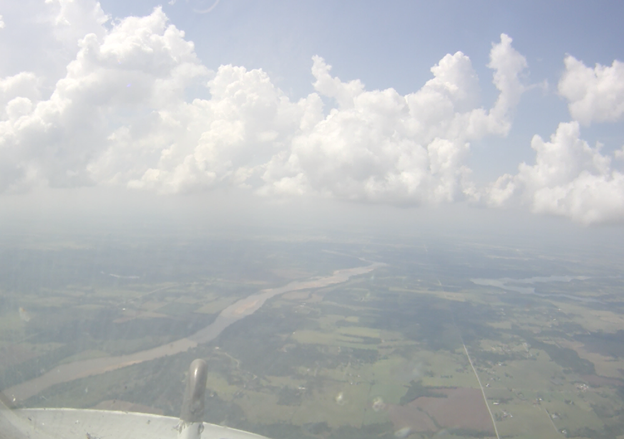Quantifying the subgrid-scale variability in aerosol properties missing in models
Submitter
Fast, Jerome D — Pacific Northwest National Laboratory
Area of research
Aerosol Processes
Journal Reference
Science
A comprehensive suite of instruments was deployed on the Atmospheric Radiation Measurement (ARM) user facility's Gulfstream-1 aircraft to characterize aerosol properties over ARM's Southern Great Plains (SGP) site in north-central Oklahoma during the spring and late summer of 2016 as part of the Holistic Interactions of Shallow Clouds, Aerosols, and Land Ecosystems (HI-SCALE) field campaign. In this study, researchers analyze the aerosol data sets to quantify aerosol number, size, composition, and cloud condensation nuclei (CCN), and then to systematically quantify their spatial variability within the boundary layer, the lowest part of the atmosphere within a few kilometers of the ground.
Impact
Complex distributions of aerosol properties evolve in space and time. Their evolution depends on emissions as well as a wide range of chemical and meteorological processes. The ability of models to represent the multiscale processes that affect the life cycle of aerosols depends on their spatial resolution, because aerosol properties are assumed to be constant within a grid cell. Subgrid-scale-dependent processes that affect aerosol populations could have a significant impact on the formation of particles, their growth to CCN, aerosol–cloud interactions, dry deposition and rainout, and therefore their overall mass, lifetimes, and radiative forcing. Quantifying subgrid-scale variability based on observations could lead to better treatment of aerosol and aerosol processes in the next generation of models, improving climate forecasts.
Summary
Thirty-eight aircraft flights with repeatable flight patterns were conducted during HI-SCALE, allowing researchers to obtain robust statistics on spatial variability of aerosol properties. A range of grid cell spacings (Dx = 3, 9, 27, 81 km) that mimic the resolution of cloud-resolving-to-global-scale models are used to compute mean values and variability within those cells. Statistics on the variability of the mean values as a function of grid spacing are computed for each flight as well as the spring and summer sampling periods.
Although the SGP site is a rural location, surprisingly large horizontal gradients in aerosol properties were frequently observed. For example, mean organic matter concentrations in the majority of the 3, 9, and 27-km cells differed from the 81-km cell typically used by global climate models by as much as ~46%. Large spatial variability in aerosol number concentrations and size distributions were also found during new particle formation events. Consequently, the majority of the 3, 9, and 27-km grid cell mean CCN number concentrations differed from the 81-km cell mean by as much as ~38%. Spatial variability varied seasonally for some aerosol properties. While measurements at a single surface site cannot reflect the spatial variability of aerosol properties, aircraft measurements averaged within an 81-km cell were found to be similar to many aerosol properties measured at the ground SGP site. This analysis suggests that it may be reasonable to directly compare most ground SGP site aerosol measurements with coarse global climate model predictions. In addition, the variability quantified by the aircraft measurements can be used as an uncertainty range when comparing surface point measurements to course-grid model predictions.


